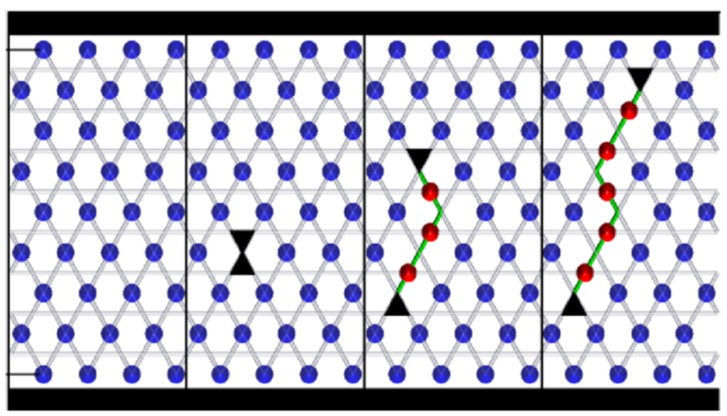The exploration of topology quantum phase and topology quantum phase change in new materials has always been the most cutting-edge research areas in condensed matter physics (Nobel Prize in Physics of 2016). On one hand, the research of storage and excitation operation of topology will lay a theoretical foundation for realization of the topology quantum computer of the next generation; on the other hand, research of topology quantum phase change would go beyond the phase transformation theory framework based on spontaneous breaking of symmetry of Landau. Recently, Zhang Xuefeng, a researcher under the Hundred Talents Program from the School of Physics, has cooperated from Professor F. Pollmann from Technical University of Munich, Professor R. Moessner from the Max Planck Institute, Professor S. Egger from the University of Kaiserslautern and Doctor He Yinchen from the University of Harvard. They used the super-large-scale quantum Monte-Carlo numerical simulation method to find the Continuous Easy-Plane Deconfined Phase Transition on the Kagome Lattice. The paper was published on Physics Review Letters, a top journal on physics, with Chongqing as the first organization (Phys. Rev. Lett. 120, 115702 (2018).

Fig. 1

Fig. 2
Fig. 1: By adjustment of quantum fluctuation, the phase change from VBS to Superfluid is realized. The phase change falls within the category of deconfined phase transition of the easy-plane NCCP1 type. Fig. 2: By boundary adjustment nearby the phase boundary, the fractionation particle excitation and quantum topology chord excitation may be observed.
A particle generally carries integer electric charge. However, due to the joint action of frustration and quantum fluctuation, there would be fractionation particle (the black upper and lower triangles) excitation and chord-form (light green) topology excitation in the system. What is surprising is that the fractionation particles may be mapped as the magnetic monopoles and the quantum chord excitation is mapped as the magnetic field lines. As such the effective theory of the system is the lattice point gauge field theory that describes two different types of magnetic monopoles. According to the effective theory, the excitation of quantum topology may result in description the phase change of which goes beyond the Landau normal form, and therefore there would be a lot of new phenomena. The research team led by Zhang Xuefeng simulated about 15,000 quantum spins using the large-scale quantum Monte Carlo numerical simulation method and discovered that the change from VBS to Superfluid in Kagome lattice actually involved deconfined phase transition of the easy-plane NCCP1 type. The reviewer commented that the simulation results were of the world top level. The paper has drawn extensive attention from top colleges and universities and research institutes of the world including the University of Harvard, Massachusetts Institute of Technology and Institute of Physics, China Academy of Sciences. The research findings would provide a new research platform for quantum topology phase change and topology excitation, so as to further expand the understanding of quantum’s topological property.
Homepage of Researcher Zhang Xuefeng:
http://phys.cqu.edu.cn/info/1034/1661.htm
http://power.itp.ac.cn/~zxf/
Link of the paper:
Continuous Easy-Plane Deconfined Phase Transition on the Kagome Lattice
X.-F. Zhang (张学锋), Y.-C. He, S. Eggert, R. Moessner, and F. Pollmann
https://journals.aps.org/prl/abstract/10.1103/PhysRevLett.120.115702

